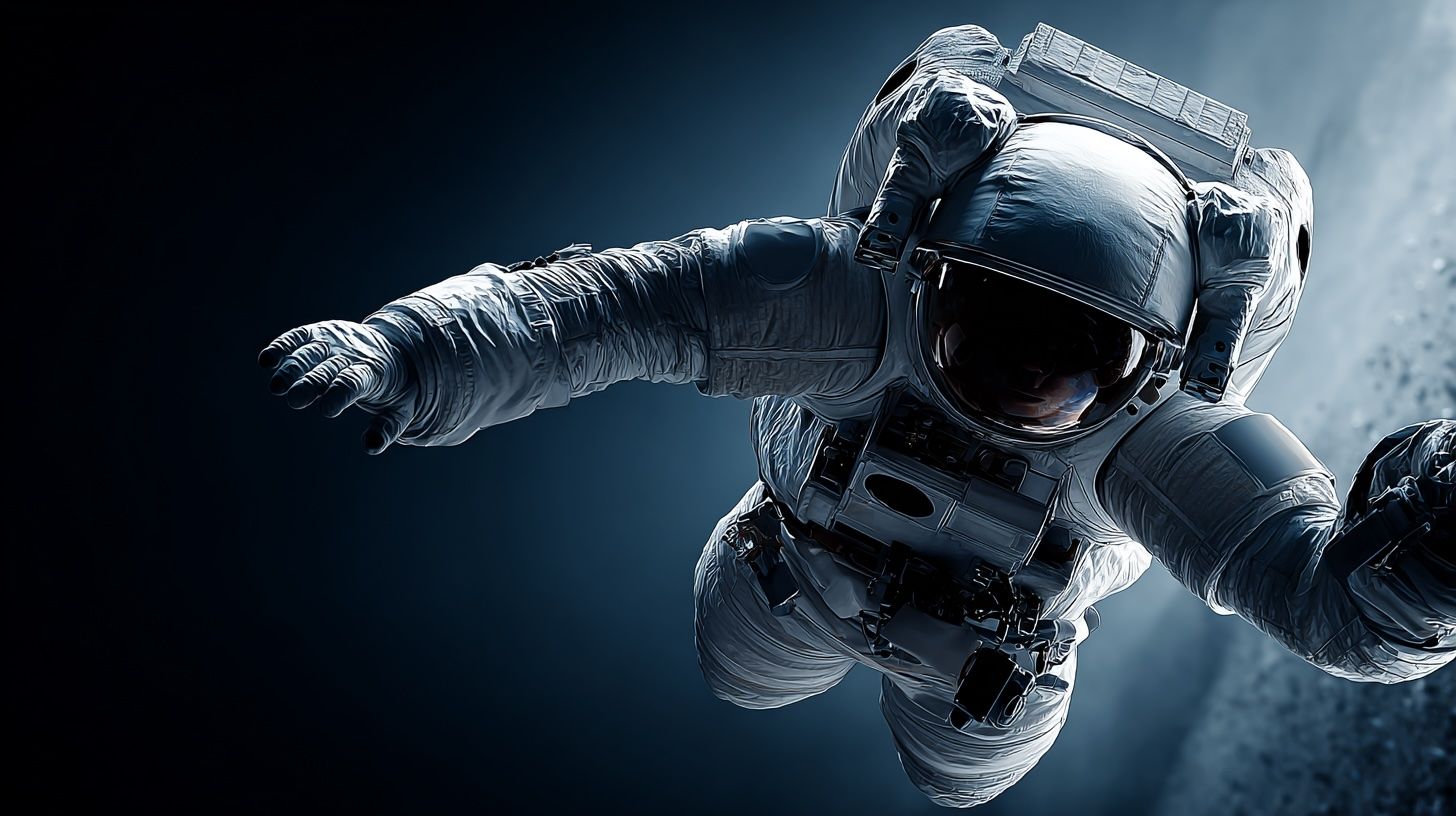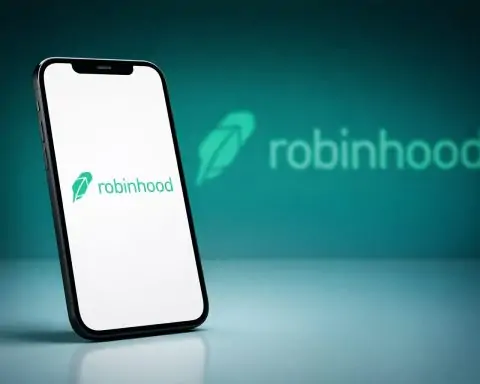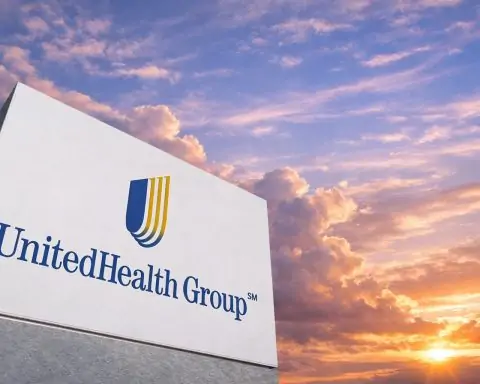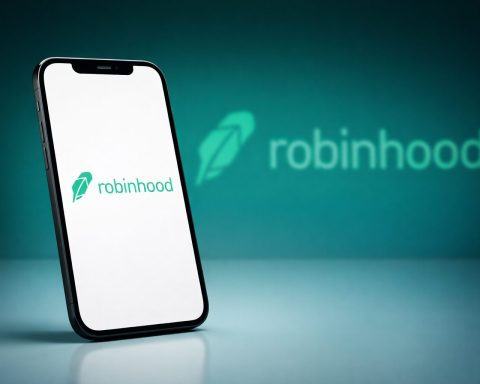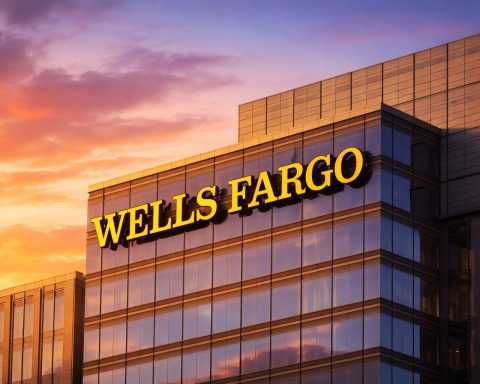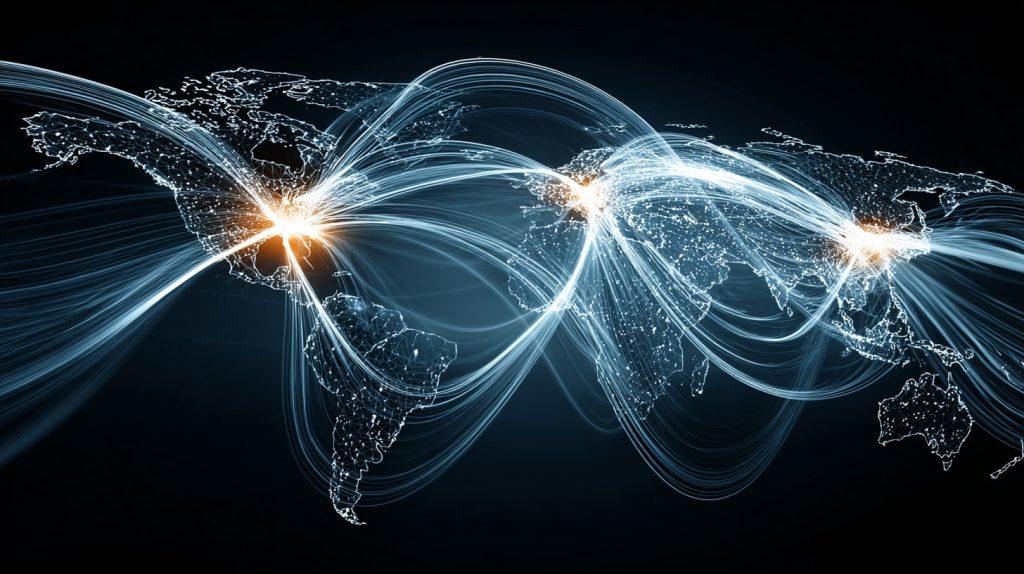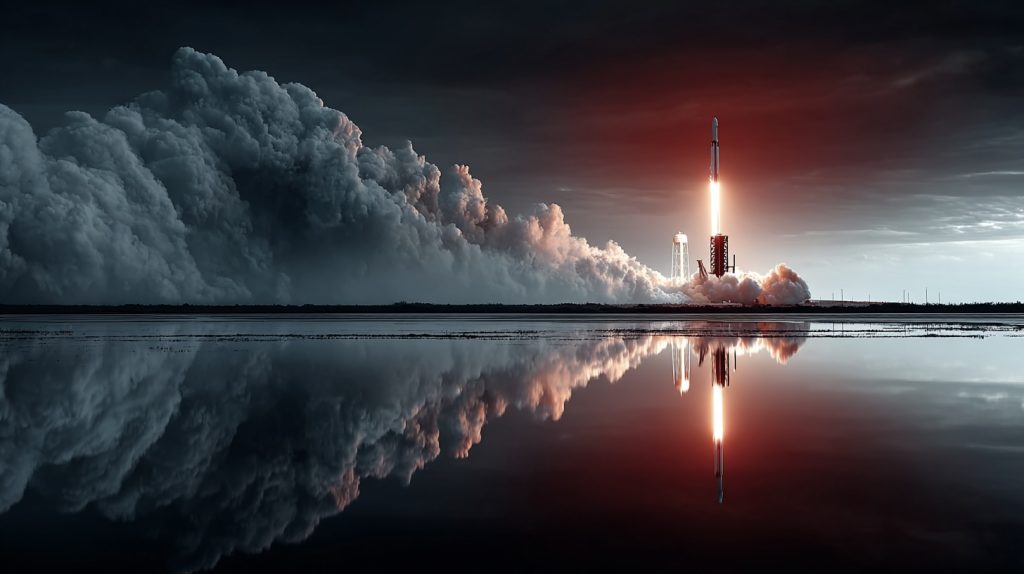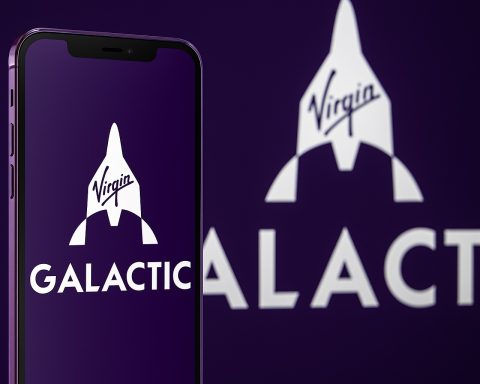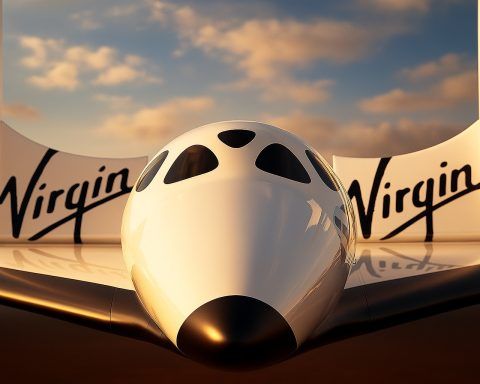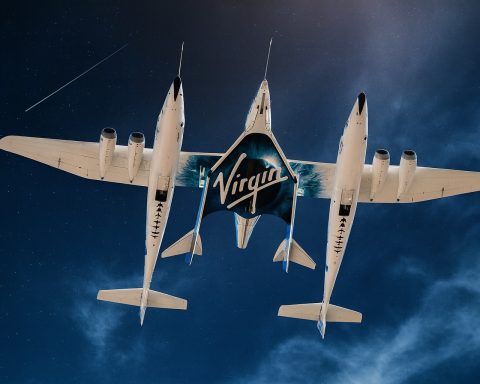- April 2001: Dennis Tito became the world’s first space tourist by paying about $20 million for a seat on a Russian Soyuz and spending seven days aboard the ISS.
- In 2004, Mojave Aerospace Ventures won the Ansari X Prize by launching SpaceShipOne, the first privately built crewed spacecraft, on back-to-back suborbital flights.
- The Commercial Space Launch Amendments Act of 2004 established an FAA licensing framework for private space launches and created a learning period with a moratorium on new safety regulations until 2012 (extended to 2025).
- Virgin Galactic’s SpaceShipTwo suffered a fatal crash in 2014 during a test flight.
- July 11, 2021: Richard Branson flew to space aboard VSS Unity, reaching about 86 km.
- July 20, 2021: Jeff Bezos rode Blue Origin’s New Shepard past the 100 km Kármán line.
- Inspiration4, SpaceX’s all-civilian orbital mission, launched September 2021 and spent about three days in orbit at ~585 km, with the capsule reportedly costing around $220 million (roughly $50–$55 million per seat).
- Ax-1, the first private trip to the ISS, launched in 2022 aboard a SpaceX Crew Dragon, carrying one professional commander Michael López-Alegría and three paying customers for about 8–10 days, with prices around $55 million per person.
- Ax-2 launched in May 2023 to the ISS, including the first private female commander Peggy Whitson; tickets around $55 million per person.
- As of 2025, more than 60 private individuals have flown to space as paying passengers or guests.
History of Commercial Space Travel for Private Citizens
Commercial space travel for private individuals – often dubbed space tourism – has evolved from a sci-fi dream into a nascent industry over the past few decades. The first landmark came in April 2001, when American businessman Dennis Tito paid ~$20 million for a seat on a Russian Soyuz rocket and became the world’s first space tourist, spending seven days aboard the International Space Station (ISS) [1] [2]. Tito’s pioneering flight (facilitated by U.S. company Space Adventures and Russia’s Roscosmos) proved that non-professionals could visit orbit – albeit after arduous training and at tremendous expense [3]. It opened the door for a handful of ultra-wealthy adventurers in the 2000s: South African Mark Shuttleworth followed in 2002, then American Gregory Olsen in 2005, Iranian-American Anousheh Ansari in 2006 (the first female private space traveler), software billionaire Charles Simonyi in 2007 and 2009, game developer Richard Garriott in 2008, and Cirque du Soleil’s founder Guy Laliberté in 2009 [4] [5]. Each paid tens of millions for trips to the ISS, and after Laliberté’s 2009 flight, this first era of orbital tourism paused for over a decade [6]. (Space Adventures even advertised a future circumlunar voyage for $100 million per seat – a trip around the Moon on Soyuz – though no private customer ultimately flew that mission [7].)
Meanwhile, entrepreneurs were eyeing suborbital spaceflight as a more accessible form of space tourism. In 2004, Mojave Aerospace Ventures (backed by Microsoft co-founder Paul Allen) won the Ansari X Prize by launching SpaceShipOne, the first privately built crewed spacecraft, on back-to-back suborbital flights [8] [9]. This achievement by engineer Burt Rutan’s team demonstrated reusable private spacecraft and ushered in a new era of commercial human spaceflight. That same year, U.S. policymakers prepared for a future space tourism industry: the Commercial Space Launch Amendments Act of 2004 established an FAA framework for licensing private space launches and set a “learning period” placing a moratorium on new safety regulations for commercial human spaceflight [10]. Under this law, companies had to inform passengers of risks and obtain “informed consent,” but regulators were prohibited from imposing further safety rules on space tourism flights until at least 2012 – later extended multiple times (currently through 2025) to allow the industry to develop [11] [12].
Throughout the 2000s, Virgin Galactic (founded 2004 by British entrepreneur Richard Branson) and Blue Origin (founded 2000 by Amazon’s Jeff Bezos) both developed suborbital vehicles, though progress was slow. Tragedy struck Virgin’s program in 2014 when a SpaceShipTwo test flight broke apart, killing a co-pilot [13] [14]. This underscored the risks of human spaceflight but did not halt development. By the early 2020s, the long-promised new era of space tourism finally arrived. In July 2021, within days of each other, Virgin Galactic and Blue Origin each launched their founders to space: Branson flew to ~86 km aboard VSS Unity on July 11, 2021, and Bezos rode New Shepard past the 100 km Kármán line on July 20, 2021 [15]. These highly publicized flights – carrying not just the billionaire owners but also crews including company staff and special guests – marked the first privately developed, fully crewed suborbital missions [16] [17]. (Branson’s flight, while reaching space by U.S. definition, did not exceed 100 km [18].) Bezos’s New Shepard capsule notably carried 82-year-old aviation legend Wally Funk (then the oldest person to reach space) and 18-year-old Oliver Daemen (the youngest ever) [19] [20]. Just a few months later, in September 2021, SpaceX made history with Inspiration4 – the first all-civilian orbital spaceflight. Billionaire Jared Isaacman financed the three-day mission for himself and three crewmates, none of whom were professional astronauts, aboard a SpaceX Crew Dragon capsule that reached ~585 km orbit around Earth [21]. The estimated price tag was about $220 million (for the full capsule), paid by Isaacman [22]. Inspiration4’s success showed that private citizens could crew orbital missions, not just brief suborbital hops.
The year 2022 saw another milestone: in April, Axiom Space partnered with SpaceX to launch Axiom-1 (Ax‑1), the first fully private mission to the ISS. Axiom-1 carried one professional (former NASA astronaut Michael López-Alegría as commander) and three paying customers to the ISS for about 8 days [23]. Each private astronaut reportedly paid $55 million for the experience [24]. This was followed by Axiom-2 in May 2023 (with another privately funded crew visiting ISS, including the first private female commander, former astronaut Peggy Whitson [25]) and Axiom-3 by late 2023 – reflecting a new model of commercial orbital trips in collaboration with government partners. By mid-2020s, the once-rare “space tourist” flights have become more frequent. In total, over 60 private individuals have flown to space as paying passengers or guests as of 2025, with a surge of suborbital fliers in 2021–2023 [26]. This rapid progress, from Tito’s solo trip in 2001 to routine commercial launches two decades later, constitutes the full history (so far) of private space travel – setting the stage for a competitive market today.
The Current Space Tourism Market Landscape
Space tourism remains an exclusive adventure, but a growing roster of companies now offers (or plans to offer) various spaceflight experiences to wealthy clients. The current landscape can be divided mainly into suborbital vs. orbital providers, with a few niche categories in between. Below we detail the major players – SpaceX, Blue Origin, Virgin Galactic, Axiom Space, and others – along with their offerings, customer profiles, and pricing.
Suborbital “Edge of Space” Flights – Blue Origin & Virgin Galactic
Blue Origin and Virgin Galactic are leading the suborbital spaceflight segment, flying private individuals to the edge of space (around 80–110 km altitude) for a few minutes of weightlessness and breathtaking views.
- Blue Origin – Jeff Bezos’s company operates the New Shepard rocket-and-capsule system, which launches vertically from West Texas and provides roughly 10–11 minutes total flight time with ~3 minutes of microgravity above the Kármán line (∼100 km) [27]. New Shepard is fully autonomous; it carries up to 6 passengers strapped into a gumdrop-shaped capsule that parachutes back to Earth after a gentle propulsive booster landing. Blue Origin’s first crewed flight in July 2021 carried Bezos himself and three others to ~107 km [28]. By August 2022, Blue Origin had flown six crewed missions (NS-16 through NS-22) and sent 31 different people to space [29]. After a 2022 booster anomaly on an uncrewed flight, New Shepard was grounded for upgrades, but flights resumed in 2023–24. As of April 2025, Blue Origin has completed 11 crewed launches, including a high-profile all-female flight (NS-31) that brought the program’s total to 58 people flown (some twice) [30]. Ticket pricing for New Shepard is not publicly published – Blue Origin treats pricing on a per-customer basis. Reports indicate a wide range: the very first seat sold at auction for $28 million, whereas another customer paid about $1 million for a later flight [31] [32]. In fact, Blue Origin has often discounted or comped seats for people with publicity value: celebrities like William Shatner, Michael Strahan, and pioneer aviator Wally Funk flew as invited guests paying nothing [33] [34]. Industry insiders describe Blue Origin’s strategy as one of “price discrimination” – charging wealthy private clients a high price while filling other seats with influencers or inspirational figures to maximize media impact [35] [36]. Observers estimate the typical price for paying customers may be in the low seven figures (perhaps $1–2 million per seat) – substantially more than Virgin Galactic’s pricing [37]. Blue Origin requires only a short training program (a couple of days of safety and zero-g practice) since the flights are brief and automated. Its clientele so far ranges from affluent executives and entrepreneurs to lottery contest winners and even a few pioneering teenagers and octogenarians, reflecting Blue Origin’s mix of ultra-wealthy buyers and publicity guests.
- Virgin Galactic – Richard Branson’s Virgin Galactic uses a very different vehicle: SpaceShipTwo, a rocket-powered spaceplane launched mid-air from a carrier aircraft. It carries up to 6 passengers + 2 pilots to ~80–90 km altitude, skimming the edge of space (Virgin defines 50 miles/80 km as the boundary). After years of testing, Virgin’s spaceplane VSS Unity finally began commercial service in mid-2023. The first commercial flight, Galactic 01 in June 2023, was a research mission with three Italian Air Force and National Research Council members (generating revenue but not traditional tourists) [38]. This was quickly followed by Galactic 02 in August 2023, which carried the first true private tourists: a British former Olympian and a Caribbean mother-daughter pair (winners of a fundraising raffle) [39] [40]. Virgin Galactic now plans to operate monthly flights of SpaceShipTwo [41]. Each flight provides only a few minutes of weightlessness; the entire journey (takeoff to landing on the same runway) lasts about 90 minutes [42]. Virgin’s ticket price is officially $450,000 per seat as of 2021–2023 sales [43] [44]. (Hundreds of early customers pre-booked at $200–250k years ago; in fact, about 800 tickets were sold by end of 2022, representing $207 million in future revenue, according to Virgin’s filings [45] [46].) Typically 3 passengers fly on each Unity trip (alongside the two pilots and one Virgin instructor in the cabin) [47]. Training for Virgin’s clients is minimal – usually a few days of pre-flight preparation at Spaceport America in New Mexico, focusing on safety and how to maximize their zero-g experience. Virgin Galactic’s customer base is comprised of high-net-worth thrill-seekers from around the world (businesspeople, entrepreneurs, retired professionals, etc.), skewing a bit younger and more international now than the early 2000s orbital tourists. The company has emphasized making space access slightly more democratic – for instance, running a sweepstakes contest for two free seats (won by the Caribbean duo who flew on Galactic 02) [48]. Still, at nearly half a million dollars per ticket, these suborbital joyrides remain the domain of the affluent.
Comparing Blue Origin and Virgin Galactic: Both offer a taste of space without going into orbit – passengers experience a high-G rocket ride, a few minutes of weightlessness, and stunning Earth vistas before return. Blue Origin’s New Shepard is a straight-up-and-down rocket; its capsule gives a higher altitude (≥100 km) and purely vertical launch/landing, whereas Virgin’s SpaceShipTwo achieves ~80–90 km in a gliding arc launched from a carrier plane, requiring runway landings. Blue Origin’s flights are shorter (about 10 minutes, with ~3–4 minutes of float time), versus Virgin’s ~1.5 hours total (with perhaps ~5 minutes of weightlessness). Both companies tout large windows and a “astronaut” experience for passengers. Blue Origin currently has the edge in flight frequency and total people flown (New Shepard has carried nearly 60 individuals by 2025 [49], vs. Virgin’s roughly dozen so far), but Virgin aims for regular monthly missions going forward [50]. Safety records are comparable to date – no serious injuries on any tourist flight – though Virgin’s program had a fatal test accident in 2014 [51], and Blue had an uncrewed rocket failure in 2022 that led to a successful capsule abort. Neither company’s vehicles have ejector seats, so they operate under an informed-consent paradigm rather than rigorous crew safety certification (more on regulations later).
Suborbital Space Tourism Offerings at a Glance:
[52] [53]
Company & Vehicle Flight Profile Altitude & Duration Training Required Price (approx) Status (First Private Flight) Blue Origin – New Shepard (rocket) Vertical launch & landing; 6-seat capsule ~105 km; ~11 min total (3–4 min weightless) [54] ~2 days orientation Variable (high $100Ks–$M+; auctioned $28M) [55] [56] Operational (July 2021 [57]) – 11 crewed flights by 2025 Virgin Galactic – SpaceShipTwo (spaceplane) Air-launched glide; runway return; 4-seat cabin (+2 pilots) ~85 km; ~90 min total (5 min weightless) [58] ~3–5 days prep $450,000 per seat (current) [59] [60] Operational (June 2023 [61]) – monthly flights planned Others (Emerging) – Space Perspective (balloon) High-altitude balloon; gentle water landing ~30 km; ~6 hours ascent/descent [62] (no zero-g) Minimal (hours) $125,000 per person [63] Launches expected ~2024 (not true spaceflight)
(Table note: “Altitude” here refers to peak altitude; Kármán line at 100 km is generally considered “space.” Virgin flies just below that but above 50 mi/80 km U.S. definition. Balloon rides like Space Perspective go far lower – ~30 km, offering black sky views but not microgravity. Though not space by strict definition, these luxury balloon flights are marketed as “edge of space” experiences competing in the space tourism sector.)
Orbital Adventures – SpaceX, Axiom and Private ISS Visits
For those who want the full space orbital experience – circling Earth for days, visiting space stations, or even looping around the Moon – only a few options exist, all extremely expensive. SpaceX is the central player enabling private orbital trips currently, often in partnership with companies like Axiom Space or Space Adventures. And Russia’s Roscosmos (with Space Adventures) pioneered orbital tourism in the 2000s and has recently re-entered the market on a limited basis.
- SpaceX (Elon Musk’s Space Exploration Technologies) – SpaceX’s Crew Dragon capsule (launched by Falcon 9 rockets) is currently the only private spacecraft certified to carry humans to orbit. It was originally developed with NASA for crew rotation to ISS, but SpaceX has also flown purely commercial missions. The Inspiration4 mission in 2021, mentioned earlier, showcased Dragon’s capabilities for free-flying orbital tourism – the crew spent three days orbiting Earth at ~585 km, higher than the ISS, enjoying panoramic views through a special glass cupola installed in their capsule [64] [65]. That mission’s cost wasn’t disclosed in detail, but was estimated around $200–$220 million total (roughly $50–$55M per seat, in line with other orbital offerings) [66]. In April 2022, SpaceX launched Axiom-1, the first private trip to the ISS, and subsequently Ax-2 (2023) and Ax-3 (late 2023) – all using Crew Dragons. These missions allow private “astronaut customers” to live aboard the ISS for about 8–10 days, experiencing orbital life alongside professional astronauts. Axiom Space, which arranges the missions, has advertised the price of an ISS trip at $55 million per person [67] [68]. In practice, some wealthy individuals have bought entire Dragon flights: e.g. Jared Isaacman (Inspiration4) and later the Polaris Program he’s funding, which includes Polaris Dawn, a Dragon flight slated for 2024 that aims to conduct a private spacewalk and reach the highest Earth orbit since Apollo [69]. SpaceX’s Dragon requires intensive training: clients prepare for months (typically ~5–6 months of training full-time) in spacecraft systems, simulators, emergency procedures, and team-building – often alongside former NASA astronauts who lead the missions. SpaceX’s safety record with Dragon has been excellent so far (all Crew Dragon missions to date have been completed without major incident). It’s worth noting that SpaceX missions are currently the only way private citizens have gone truly into orbit on their own missions – neither Virgin nor Blue go orbital, and Boeing’s Starliner has yet to fly passengers. SpaceX also has its eyes on future tourist ventures beyond Earth orbit – notably the proposed “dearMoon” lunar flight (a week-long Starship voyage around the Moon bankrolled by Japanese billionaire Yusaku Maezawa). However, that project has faced delays and uncertainty (Maezawa canceled his 2018 contract for dearMoon in 2024 due to Starship’s developmental delays) [70] [71]. In the meantime, Maezawa instead flew to the ISS via Soyuz in Dec 2021, and another private Starship lunar flyby attempt will likely wait until Starship is human-rated in coming years.
- Axiom Space – Mentioned above in conjunction with SpaceX, Axiom is a Houston-based company working closely with SpaceX to send private crews to the ISS. Axiom essentially charters Crew Dragons (and training/services from SpaceX) and sells 10-day ISS missions to wealthy clients. Each mission typically includes one professional commander (often a former NASA astronaut) and three paying customers. Ax-1 in 2022 carried investors/entrepreneurs from the US, Canada, and Israel; Ax-2 in 2023 included private customers from the US and Saudi Arabia (the Saudi government sponsored two of its astronauts on that flight). Prices are about $50–60M each, as noted. Beyond these missions, Axiom has a bigger vision: it is building its own commercial space station modules. The first Axiom module is planned to launch and attach to the ISS by 2025–2026, eventually forming the core of a free-flying Axiom Station when the ISS is retired. This could provide a dedicated destination for future space tourists (and researchers) with Axiom as the station operator. In the present, Axiom missions rely on the ISS partnership and NASA’s allowance of limited private astronaut visits. NASA, for its part, has set some rules – for instance, requiring private ISS visitors to pass health screenings, undergo about 15 weeks of specific training for ISS systems, and reimburse the costs of life support and crew time on station. So these trips are highly regulated and curated experiences – more “private astronaut missions” than simple tourism jaunts.
- Roscosmos/Space Adventures (Russia) – Before SpaceX, Russia was the only game in town for orbital tourist flights. As discussed, from 2001–2009, Space Adventures brokered eight private missions on Soyuz to the ISS. Those trips cost in the range of $20–40 million back then [72] [73]. After a long hiatus, Russia re-entered the market: in December 2021, Space Adventures arranged a flight for Yusaku Maezawa (and his assistant Yozo Hirano) to spend 12 days on the ISS – marking the first tourist visit to ISS in over a decade. In 2023, Roscosmos also flew a Belarusian female cosmonaut who was essentially a privately sponsored flyer. However, Russia’s capacity for tourists is limited because Soyuz seats are now often occupied by professional cosmonauts or exchange astronauts. (The 2021 Maezawa flight was possible due to an extra Soyuz that year.) Space Adventures had also announced plans for a Soyuz lunar joyride – sending two paying passengers and a cosmonaut in a loop around the Moon – but this has not materialized and seems unlikely given contemporary focus on other programs. With geopolitical tensions and the rise of SpaceX, Russia’s role in space tourism may remain niche. Still, they have the expertise – Soyuz is a workhorse, and Roscosmos could take ultra-wealthy clients if any are eager to pay and if mission slots are available.
Beyond these, Boeing may soon enter the orbital arena with its Starliner capsule (once it’s operational). Starliner’s primary customer is NASA, but Boeing has floated the idea of selling extra seats to private astronauts on NASA missions or running dedicated private flights to ISS. As of mid-2025, Starliner has yet to fly any passengers (its first crewed test is scheduled for 2024 [74]), so it remains to be seen if it will carry tourists in the near future.
Orbital Tourism Options – Key Facts:
[75] [76]
Provider & Vehicle Destination Typical Mission Duration Training Required Cost per Person Notes/Status SpaceX – Crew Dragon Free-Flyer Earth orbit (e.g. ~585 km) ~3 days (free orbit) ~5–6 months intensive ~$50–60 M (est.) [77] Inspiration4 (2021) was first all-civilian orbital [78]; more private Dragon flights (Polaris program) coming. SpaceX/Axiom – Crew Dragon to ISS ISS (400 km) ~8–10 days on ISS ~6 months + ISS specific ~$55 M [79] Ax-1 (2022), Ax-2 (2023) completed; Ax-3/4 planned. Axiom building its own station for future. Roscosmos – Soyuz (via Space Adventures) ISS (orbit) ~10–12 days on ISS ~6 months (in Russia) ~$20–50 M (historical) [80] [81] 8 tourists flown 2001–09; resumed in 2021. Future opportunities limited; one-off lunar flyby was offered at ~$100 M [82] (none flown). Planned: SpaceX Starship Lunar flyby (Moon orbit) ~6 days (circumlunar) Many months (TBD) Private sponsorship (TBD) The dearMoon mission (privately funded) was planned for 2023–24 but canceled/delayed [83]. Starship in testing; likely future platform for Moon/Mars trips. Table: Current and near-term orbital tourism offerings. Costs are rough, vary by mission and negotiation. Training includes general astronaut training and mission-specific prep (e.g. zero-g flights, capsule sims, Russian language for Soyuz, etc.). Note that NASA also occasionally lets private citizens fly as “guests” on government missions (e.g. a U.S. astronaut’s spouse might pay for a ride), but this is not a commercial offering per se).
Adventure Alternatives: Zero-Gravity Flights and Stratospheric Balloons
Not everyone with “astronaut fever” can pay millions or even hundreds of thousands. A small segment of the market offers quasi-space experiences that are more affordable and accessible, often as a thrill or training for space. The most common are parabolic aircraft flights that create brief weightlessness – for example, Zero Gravity Corporation operates a modified Boeing 727 that flies parabolic arcs to give passengers ~30 seconds of microgravity at a time (15 arcs per flight). Tickets cost on the order of $5,000 – a bargain next to spacecraft – and dozens of flights a year take thousands of customers, including space tourists prepping for the real thing. Another emerging product is high-altitude balloon trips, like those planned by Space Perspective (US-based) and World View. These involve a pressurized capsule lifted ~30 km up by a giant balloon, allowing a gentle 6-hour journey with stunning Earth curvature views (though not true space or weightlessness) [84]. Space Perspective is charging $125,000 per seat and has sold out its initial flights starting likely in 2024 [85]. While these experiences don’t reach space, they target luxury travelers and “bucket-listers” as a lower-cost, lower-risk taste of the space feeling. Some analysts include these in the space tourism market since they compete for similar customer interest.
Comparing Experiences, Training, and Pricing Across Companies
The burgeoning menu of commercial spaceflight experiences can be contrasted across several factors: cost, destination/altitude, duration, vehicle design, required training, and amenities. A few clear tiers have emerged:
- Suborbital hops (Blue Origin, Virgin Galactic): Destination: space edge (80–110 km altitude). Duration: minutes of microgravity (total trip under 2 hours). Training: only a few days of basic prep (no heavy-duty simulations needed). Cost: mid-six-figures to low millions (Virgin $450k, Blue rumored $1–2M range) [86] [87]. Experience: Dramatic rocket boost (3–4g acceleration), quick up-and-down, with exhilarating views and floating. Seats are reclined during launch; once in microgravity, passengers unstrap to float and gaze out large windows. Both Virgin and Blue provide live video, commemorative photos, and a few minutes of Earth gazing – essentially a flashy thrill ride and astronaut wings.
- Orbital trips (Earth orbit): Destination: Low Earth Orbit (400–600 km), possibly visiting ISS. Duration: several days to ~2 weeks. Training: months of intensive training, including simulations of spacecraft operations, emergency drills, and (for ISS) learning station systems and scientific experiments. Cost: tens of millions per person [88] [89]. Experience: True spaceflight – multiple sunrises and sunsets each day, sustained zero-g living (eating, sleeping, working in microgravity), potentially conducting experiments or outreach. Comfort is relatively spartan: Crew Dragon, for instance, is roomy enough for 4 for a few days (with a private toilet and the cupola window for Earth-gazing). On ISS, private visitors have a small crew quarters and follow a schedule of activities. It’s an expedition rather than a joyride – clients often have specific projects (scientific, educational, or even film production) to justify their stay, alongside sightseeing. The risk and physical demands are higher: Orbital tourists must be in good health to endure launch reentry forces, and accept the higher inherent dangers of extended spaceflight.
- Beyond Earth orbit (future lunar trips): Destination: Lunar flyby or orbit (~300,000+ km from Earth). Duration: about a week. Training: many months, similar to orbital (with added deep-space mission considerations). Cost: extremely high – likely hundreds of millions (though exact figures TBD; often these are privately funded by billionaires like Maezawa). Experience: a profound voyage – seeing Earth as a distant marble, experiencing days in space and the first views of the Moon up-close since Apollo. These missions remain aspirational as of 2025 – none have flown yet with private crews, and schedules keep slipping due to vehicle readiness (e.g. SpaceX’s Starship). They will mark the next level of space tourism once realized.
Another important comparison point is customer demographics and services. So far, space tourism customers skew toward ultra-high-net-worth individuals, typically middle-aged or older men – but this is slowly broadening. More women have flown recently (Virgin’s and Blue Origin’s flights in 2021–25 included multiple female participants, and one Blue Origin mission in 2025 was all-female) [90] [91]. Ages have ranged from 18 to 90, showing that with medical screening, a wide age range can handle short spaceflights [92]. Many orbital clients have been entrepreneurs or investors, while suborbital trips attracted celebrities and adventurous professionals. Both Blue Origin and Virgin Galactic incorporate luxury hospitality into the experience – e.g. multi-day bonding events, spaceflight training with personal instructors, custom flight suits, and post-flight celebrations with VIPs. These companies aim to deliver not just a flight but a prestige experience and lifelong membership in an “astronaut club.” Indeed, Virgin Galactic refers to its customers as “Future Astronauts” and provides a membership community, while Blue Origin issues official astronaut wings and often has Jeff Bezos personally greet passengers post-flight (as seen when he welcomed crews back to the capsule) [93] [94]. The perks differ: Virgin’s spaceplane allows a pilot-guided flight (some customers might value having human pilots at the helm), while Blue’s is fully automated. Virgin’s cabin is more spacious per person (only 3 or 4 passengers at a time), whereas Blue’s capsule can carry 6, which makes for a more shared experience. In terms of comfort, suborbital vehicles are high-adrenaline but short, whereas orbital capsules are cramped for days (an ISS trip at least lets tourists move around in the station’s modules).
Pricing transparency also varies. Virgin openly set its price at $450k [95]; Blue Origin keeps prices opaque and flexible [96] [97]. For orbital flights, prices are mostly bespoke negotiations (aside from known Axiom/NASA rates). It’s notable that all these endeavors currently require substantial personal wealth or sponsorship – despite some rhetoric about democratizing access, the reality is that space tourism in 2025 is a playground for millionaires and billionaires. However, some companies and nonprofits have begun using sponsored contests to send non-wealthy individuals (e.g. raffle winners, contest winners, or charity ambassadors like cancer survivor Hayley Arceneaux on Inspiration4). This trend may continue as a way to infuse diversity and goodwill into what might otherwise be seen as purely elite adventures.
Technological Readiness, Launch Cadence, and Safety
With multiple companies now flying, how reliable and safe is commercial space travel, and how often are flights happening? The industry is still in early days, with relatively low launch frequencies and significant caution around safety. Here’s a snapshot:
- Launch Frequency: In the suborbital sector, Blue Origin led initially – from July 2021 to August 2022 it flew 6 crewed missions (roughly one every 2–3 months) [98] [99]. After fixing the 2022 booster issue, Blue Origin resumed flights in mid-2024 and by April 2025 had completed the 11th crewed flight [100]. This indicates an average cadence of a few flights per year, though Blue Origin has signaled it intends to increase frequency as demand grows. Virgin Galactic, after years of test flights, finally started flying paying customers in mid-2023 and aims for a monthly flight rhythm [101]. Indeed, it flew at least two commercial flights in 2023 (Galactic 01 and 02) and was planning Galactic 03 by Sept 2023 [102]. If Virgin can sustain monthly launches through 2024–25 with its single SpaceShipTwo vehicle, that would be 12 per year. In practice, maintenance and weather can impact this; still, Virgin’s aspiration is to scale up to hundreds of customers flown in the next few years, especially once its next-generation spaceplanes come online around 2026. SpaceX has been launching Crew Dragons regularly, primarily for NASA: about 2 crew missions per year to ISS. For private missions, the cadence so far is ~one per year (Inspiration4 in 2021, Ax-1 in 2022, Ax-2 in 2023, with Ax-3 in late 2023). SpaceX has more private missions on the manifest (Polaris Dawn in 2024, Ax-4 in 2024, perhaps another Inspiration/Polaris flight in 2025), so we may see 1–2 commercial orbital launches per year going forward, alongside ~2 governmental missions per year. As more private space stations become available by late decade, the frequency could rise. But for now, orbital tourism launches are infrequent due to the high cost and complexity.
- Vehicle and Tech Readiness: Each provider’s technology is at a slightly different stage. Blue Origin’s New Shepard had a robust flight test program and, aside from one uncrewed failure (where the capsule’s emergency escape system worked flawlessly), it has performed well. By 2025, New Shepard has shown it can reliably carry people to space and back – though it’s still essentially a prototype vehicle operated by Blue Origin for relatively low-volume service. Virgin Galactic’s SpaceShipTwo also underwent a long development; it has now completed a few smooth flights with civilians. However, SpaceShipTwo is labor-intensive (needs a carrier plane, etc.) and each vehicle can only fly so often – Virgin is investing in a new “Delta class” spaceplane to be more efficient by 2026. In terms of capacity, these suborbital craft can at most fly a handful of people per launch, so scaling up means building more vehicles (Virgin is doing so; Blue Origin could build a second New Shepard, but currently has one primary booster). SpaceX’s Crew Dragon is a mature system with many orbital flights (it’s safely delivered around 40 people to orbit when counting NASA and private missions). Dragon can carry 4 at a time and stay in orbit for a week or more, so technology-wise it’s a proven capsule. The limiting factor for SpaceX’s tourism expansion is fleet availability and cost – Dragon production is slow since only a few are needed for NASA, and the cost to launch one with Falcon 9 (even reused) is still high. SpaceX’s next big thing, Starship, is in prototype test flights as of 2025 and has not yet reached orbit successfully. If Starship becomes operational, its huge size and full reusability could revolutionize space tourism (potentially flying dozens of people at once, to orbit or beyond, at much lower per-person cost). But that remains speculative until Starship is proven and human-rated – likely several years away.
- Safety Record: By sheer luck or careful planning (or both), no paying space tourist has been seriously injured or killed on a flight to date. This is a remarkable statistic given the inherent dangers of rocketry. That said, the industry’s approach to safety is distinctive: under current U.S. law, commercial spaceflight operates under an “informed consent” regime [103]. Passengers must acknowledge that the government has not certified the safety of these vehicles, and they are flying at their own risk [104]. Companies must disclose known hazards and past incidents [105]. Essentially, early space tourism is treated like a high-risk adventure activity rather than a public transport system. The FAA does license launches for public safety (ensuring the rockets won’t endanger people on the ground or in aircraft), and an FAA observer is present at each launch [106]. But the FAA is, by law, not allowed to impose additional crew/passenger safety regulations until at least 2025 (the moratorium was extended to Jan 1, 2025, and Congress is considering pushing it to 2027 or beyond) [107] [108]. This “learning period” is predicated on the idea that the industry needs time to innovate without over-regulation, and that only after enough flights will it make sense to codify specific safety rules. This approach has its critics – effectively, tourists are test subjects in these early years. The 2014 Virgin Galactic test crash was a sobering reminder of what can go wrong (pilot error and design issues led to a breakup at Mach 1+). Blue Origin’s 2022 uncrewed failure also illustrated that rockets can and do fail; thankfully their capsule’s abort system saved the (empty) cabin [109]. In the orbital realm, SpaceX’s track record with crewed Dragons has been spotless so far, though there was a close call in 2020 when a used Falcon 9 stage had a propulsion issue (managed by automated systems). Russia’s Soyuz had an abort in 2018 during a crew launch (no tourists aboard; the crew survived via the escape system). All providers emphasize that safety is the top priority, often conducting extensive tests. Blue Origin, for instance, did over a dozen uncrewed test flights of New Shepard before putting people on board, and touts multiple redundant systems (parachutes, retro-thrusters, escape motor). Virgin Galactic did many glide and powered tests and now flies with two pilots who are highly trained. SpaceX leverages NASA’s rigorous review – Crew Dragon has emergency launch abort capability, backup systems, etc., making it as safe as any spacecraft has been. Still, spaceflight is never risk-free. The probability of fatal accident in space tourism is hard to estimate given few flights, but it is certainly higher than commercial air travel. Companies handle this by insuring flights and, as mentioned, making sure customers sign liability waivers. Regulatory bodies like the FAA will eventually enact stricter occupant safety standards (for example, requiring certain design safety margins or operator safety management systems) – current proposals suggest something by 2025–2028 unless extended [110] [111]. Until then, the industry’s safety is effectively self-governed via voluntary standards and the companies’ own interest in avoiding tragedy.
In summary, technology is at a demonstrator stage: it works, but each flight is still a significant event, not yet routine transport. Launch rates are improving gradually but are nowhere near airline-like schedules – Virgin might reach ~12 per year, Blue perhaps 6–10 per year, and orbital trips a couple per year in the mid-2020s. Each success builds confidence, but a serious accident could set the field back considerably (both in public perception and in possible regulatory clamp-down). It’s a delicate phase where maintaining a good safety record is crucial for long-term viability.
Future Plans: Point-to-Point Travel, Lunar and Mars Tourism, and Space Habitats
What does the future hold for commercial space travel? Industry visionaries predict a progression from today’s short joyrides and orbital visits to far grander ventures: point-to-point suborbital travel on Earth, orbiting hotels, lunar vacations, and even Mars expeditions for adventurous (and well-heeled) pioneers. While some of these remain conceptual, companies are actively laying groundwork:
- Point-to-Point Suborbital Transport: Imagine blasting off from New York and landing in Tokyo in under an hour via a suborbital rocket flight. This is the idea of point-to-point space travel. In theory, a vehicle like SpaceX’s Starship could take passengers up on a ballistic trajectory and land across the globe, achieving ultra-fast long-distance travel. SpaceX teased this concept in 2017, suggesting Starship (then “BFR”) might make NYC–Shanghai in 39 minutes and do so at economy airfares – a bold claim [112]. In reality, enormous challenges exist: regulatory approval to launch rockets near cities, sonic boom noise, passenger safety for such intense launches, and the economics of operating high-frequency rocket flights. Still, the U.S. military and some commercial entities have shown interest in rocket-based cargo or passenger delivery. Virgin Galactic has also floated the idea of a high-speed point-to-point vehicle (in 2020 it announced a Mach 3 jet concept in partnership with Rolls-Royce). The timeline is uncertain – perhaps late 2020s or 2030s before this becomes feasible. Analysts think that if it happens, it might begin with premium business travel or military transport between a few destinations. Technically, Starship or a Virgin spaceplane could do it; the question is whether it’s practical or economical compared to emerging supersonic jets or simply longer nonstop flights. Nonetheless, point-to-point capability would be a game-changer: turning spaceports into global transportation hubs and blurring the line between astronaut and international traveler. SpaceX’s focus is currently on orbital and deep-space missions, so point-to-point might take a backseat until Starship’s primary objectives are met. The FAA and international aviation bodies would also need to create a new framework for such travel – likely requiring significantly more rigorous safety regulations than current tourism flights (since it would involve uninformed general-public passengers essentially using a rocket as a plane).
- Lunar Tourism: With NASA’s Artemis program aiming to return astronauts to the Moon, there’s parallel interest in private lunar trips. SpaceX’s Starship is under contract to land astronauts on the Moon for NASA, but it could also carry private customers on separate missions. The aforementioned dearMoon project was to be the first: a Starship carrying Yusaku Maezawa and a crew of artists on a week-long free-return loop around the Moon, originally slated for 2023. As of 2024, Starship’s delays prompted Maezawa to cancel that particular mission [113], but he left open the possibility of doing it later once Starship is proven. Separately, in 2022 another billionaire (Dennis Tito, the original ISS tourist) and his wife signed up with SpaceX for a privately crewed Starship lunar flyby, essentially booking two seats on a future Starship Moon trip. Clearly, demand exists among the super-rich for the ultimate space vacation – a chance to see the Moon up close and Earth from afar. The cost of these ventures likely exceeds $100 million per person, when factoring the development and exclusivity. Blue Origin is also tangentially in the lunar game: it’s developing a Blue Moon lunar lander (selected for Artemis V in 2029), and Blue Origin leads the Orbital Reef space station project (more on that next). While Blue Origin hasn’t announced tourist Moon flights, one could imagine a future where Blue partners with NASA or others to allow a paying civilian on a Moon mission (much as Russia flew Tito to ISS). Over the longer term, if Starship or other systems dramatically reduce launch costs, orbital “lunar hotels” or lunar surface base tourism might become viable. Companies like Space Adventures once had plans to send people on a Soyuz around the Moon (with a stop at the ISS for fueling) – two clients were purportedly signed up around 2014, but that fell through, likely because the specialized hardware was never built. Now, eyes are on SpaceX: if it can safely fly Starship by the late 2020s, we may see the first private citizens swinging around the Moon or even landing on it (perhaps alongside NASA missions or as separate endeavors for those willing to pay the price and take the risk of an days-long deep-space voyage).
- Mars and Beyond: Mars tourism is the long-term vision espoused by Elon Musk and others – albeit tourism might not be the right word initially, as early Mars journeys would be more like dangerous expeditions or one-way colonization trips. SpaceX’s explicit goal is to enable a Mars colony, sending dozens of people at a time on Starships. Musk has conjectured eventual ticket prices to Mars could be on the order of $100,000 (to make it broadly accessible to those who want to move there), but this is speculative and assumes massive scale and cost reduction. Realistically, the first Mars-bound humans (perhaps late 2030s or 2040s) will likely be government astronauts or hand-picked scientists. A wealthy thrill-seeker might negotiate to join a mission, but the journey is six+ months each way, with high radiation exposure, zero rescue options, and years-long commitment – far beyond any tourism model today. Perhaps by mid-21st century, if a Mars settlement exists, adventurous tourists might go for a visit (analogous to climbing Everest or visiting Antarctica’s South Pole station – extreme adventure for those with means). Space Adventures at one point pitched a “Venus flyby” mission as well (no takers yet!). These deep-space tourism ideas remain aspirational, hinging entirely on future spacecraft capabilities. In the nearer term, private Mars experiences might be simulated on Earth (e.g. companies offering Mars habitat simulations in deserts) rather than actual spaceflights.
- Space Habitats and Hotels: A more concrete development is the plan for multiple private space stations in Earth orbit by the end of this decade. NASA is contracting with private consortia to build successors to the ISS. One is Axiom Station – as noted, starting as modules on ISS by 2025 and later separating. Another is Orbital Reef, led by Blue Origin and Sierra Space, targeted for ~2027 launch. Orbital Reef is pitched as a “mixed-use business park in space” that could host research, industrial manufacturing – and yes, space tourists (in a space hotel module with big windows) [114] [115]. Sierra Space is developing a spaceplane (Dream Chaser) that could carry people to Orbital Reef, complementing capsules. A third project, Starlab, led by Nanoracks/Lockheed Martin, also aims for a 2027 launch of a small station with room for four astronauts. Even startups like Vast have entered the fray – Vast Space is building a tiny station called Haven-1 to debut as soon as 2026, planning to send a crew of four on a SpaceX Dragon for a month-long stay as a commercial orbiting outpost [116] [117]. These stations are being designed with tourism in mind alongside research. They may feature larger windows, comfortable accommodations, and even entertainment: think space hotels where you can float in a “space lounge” and watch Earth rotate below. Of course, early stays will still be very pricey and likely short (a week or two). But as multiple stations compete, prices could inch down. Axiom’s published price for a 10-day trip (including ISS use) is $55M, but a stay on Axiom’s own station might be less if launch costs drop and in-space infrastructure improves. By 2030, we might see private astronauts outnumber government astronauts in orbit at times, as commercial stations host paying guests and corporate researchers.
- Global Participation: The future of space tourism is also global. The US companies currently lead, but China is not far behind. In 2023–24, Chinese commercial company CAS Space (with government backing) announced plans for suborbital space tourism flights by 2027–2028 [118] [119]. They are developing a vehicle that carries 7 passengers to edge of space, and intriguingly plan to operate it from an “aerospace theme park” with very high launch frequency – potentially a launch every 100 hours (≈ 3.5 days) with a fleet of vehicles [120] [121]. Their target price is 2–3 million yuan ($300–450k) per seat [122] [123], comparable to Western suborbital offerings. Also, a different Chinese startup, Deep Blue Aerospace, is reportedly selling early tickets for 2027 flights at around ¥1.5 M ($210k) – showing an eagerness to undercut on price. If China follows through, it could open space tourism to Asia’s wealthy class and create international competition that helps drive innovation and possibly lower costs. Other nations may join in too: companies in Europe (like Sweden’s Spaceport Esrange) have eyed suborbital tourism, and India’s space agency has mentioned future astro-tourism ambitions. Even the UAE has a spaceport under development and has invested in Virgin Galactic. So by 2030s, space tourism might not be a U.S.-Russia duopoly as it largely has been – instead a truly worldwide market.
All these future plans hinge on continued market demand and cost reduction. For point-to-point travel to succeed, there must be enough demand from business travelers or high-end tourists to fill those rockets regularly. For space hotels to thrive, repeat business and corporate use will be key, not just one-off billionaire visits. The industry and analysts are cautiously optimistic: a UBS forecast projects space tourism could become a $4 billion per year market by 2030 [124] [125]. Some market research even predicts hundreds of people per year going to space by the end of this decade [126]. On the other hand, there are skeptics who recall the false starts of the past (e.g., many thought space tourism would take off after 2004’s X Prize, only for it to stagnate for years). The coming 5–10 years will be decisive in proving whether this can grow beyond a novelty for the ultra-rich.
Market Viability and Outlook for Broader Access
As of 2025, commercial spaceflight for private individuals is undeniably real, but its viability as a large-scale business is still being tested. The current market has been described as a “billionaire’s playground” – indeed, the early momentum came from billionaires funding companies (Musk, Bezos, Branson) and billionaires buying rides (Isaacman, Maezawa, Tito, etc.). For the industry to sustain and expand, it must find a broader customer base or drive costs low enough to tap into merely “millionaires” and eventually well-off professionals, and one day perhaps the general public.
Key factors that will influence market growth include:
- Cost Trends: Right now, the cheapest space experience (suborbital) is several hundred thousand dollars. Orbital flights are tens of millions. History shows new technologies tend to have high cost initially that comes down with scaling and competition. Reusable rockets and spaceplanes are the technological path to cost reduction. SpaceX’s Starship, if successful, could slash the cost per kilogram to orbit by an order of magnitude or more, potentially enabling orbital ticket prices in the single-digit millions or even less over time. Reusability of suborbital vehicles (both New Shepard and SpaceShipTwo are reusable) also helps margins, but so far the price to consumer hasn’t dropped – companies are taking profit or recouping R&D. As more players (like the Chinese firms or perhaps startups like PD Aerospace in Japan, etc.) enter the suborbital market, we might see price competition that brings tickets down a bit (maybe towards $200k). For orbital, if by late 2020s there are multiple private capsules or spaceplanes flying (Dragon, Starliner, Dream Chaser, etc.) and multiple destinations (ISS, Axiom Station, Orbital Reef), there could be competitive pricing for a “10-day orbital package.” In an optimistic scenario, orbital trip costs might fall to a few million dollars per person by the 2030s – expensive, but within reach of not just billionaires but perhaps centi-millionaires and corporate/government-sponsored individuals (think national lotteries to send a teacher to ISS, etc.). Economies of scale have not kicked in yet, but if Virgin and Blue start flying weekly or daily, unit costs will fall and they might lower ticket prices to fill capacity. However, it’s also possible prices will remain high due to limited supply (especially orbital) and the cachet of scarcity.
- Market Demand: So far, demand signals are strong in the high-end niche – Virgin had 800 ticket holders waiting before commercial start [127], and Blue Origin reportedly had a large pool of interested parties (though exact numbers not public). The experience of the first customers has generally been extremely positive – many describing it as life-changing and worth the price. This “word of mouth” among the wealthy could drive continued sales. There’s also a sizeable community of space enthusiasts globally who can’t afford it yet but would if costs dropped (for instance, a survey might find thousands who’d pay $50k for a suborbital flight if it were possible). Beyond tourism, there are also educational and research markets – e.g. national STEM contests to send students to space, or researchers conducting zero-g experiments – that could subsidize some seats. If point-to-point travel becomes real, that opens an entirely different market (premium global transit) that could cross-subsidize leisure space travel. Corporate sponsorships are another angle: we saw contests (Omaze raffle for Virgin, Space for Humanity sponsoring Blue seats) where companies or nonprofits foot the bill in exchange for publicity or charity fundraising [128] [129]. That may continue, effectively adding demand (since not all seats are bought by the individual flying – sometimes it’s an organization buying it for them).
- Regulation and Safety Perception: A major accident could dampen demand severely, at least temporarily. Conversely, a perfect safety record over, say, 100 or 1000 flights will build public trust and could make more people willing to try. By late 2020s, regulators will likely impose some baseline safety requirements (which might increase costs for operators or slow innovation). But if done well, regulation can also bolster customer confidence. Insurance for spaceflight is currently specialized, but if the industry grows, one might imagine more available insurance or even life insurance covering space trips, making it easier for people to say yes. Government partnerships could also expand access – for example, NASA’s plans to fly “private astronauts” (who might be scientists or teachers) to ISS on government missions could bring new demographics into orbit. In 2022, the UAE bought a seat on SpaceX’s Crew-6 mission for an Emirati astronaut – effectively a country paying ~$70M to send its representative for research. In future, countries without their own space program might simply buy rides commercially. This could blur the line between professional and tourist, but increases overall market volume.
- Public Interest and Ethical Perception: There is both excitement and criticism around space tourism. Enthusiasts see it as humanity opening a new frontier and eventually making space accessible to all. Critics call it a wasteful indulgence for the rich and worry about environmental impacts (rocket launches do emit carbon/soot, though the frequency is tiny relative to aviation so far). The industry is aware of this image problem – companies often highlight scientific and educational aspects of private flights. For instance, Virgin Galactic’s first flights were for research payloads, and Blue Origin flies student experiment kits alongside tourists. If space tourism is seen as contributing to science or inspiration, it may gain broader public support. The environmental footprint might come under scrutiny if flights ramp up. Some studies warn that a large number of suborbital launches could impact the stratosphere and climate [130] [131]. Providers might need to adopt cleaner fuels or mitigation measures in the future.
Potential for Broader Consumer Access: In the long run (looking out 20+ years), the vision is that going to space could become routine and affordable, akin to air travel. Achieving that will require transformative tech (fully reusable spacecraft that operate almost like airplanes, rapid turnaround, long vehicle life) and a viable value proposition (destinations and experiences people want to pay for). The path might resemble how air travel evolved: starting as exclusive (1920s air flight was a luxury for wealthy), then gradually scaling with better tech and mass production (post-WWII aviation boom) into something middle classes could afford. If space tourism can similarly cross the chasm to mass market, we could see space cruises, orbital vacations, even honeymoons in space as common notions by late 21st century.
However, significant challenges remain before that vision is realized. Cost must drop by an order of magnitude or more; safety must be assured to a high degree (so that average people feel comfortable taking the risk); and there need to be activities in space that attract broader demographics (beyond the novelty of weightlessness and view – perhaps sports in zero-g, manufacturing that tourists can partake in, etc.). Companies like Axiom are even considering movie production in space – Ax-2 in 2023 included plans to film scenes for a movie with actor Tom Cruise (though ultimately he did not fly then). Entertainment in space could become a driver – imagine film crews, sports events, or ultra-wealthy gamers hosting competitions in microgravity.
In conclusion, the commercial spaceflight industry has in just two decades gone from zero privately flown people to dozens of private individuals reaching space. The history shows a trajectory of initial government partnership (Soyuz trips), prizes and experimentation (X Prize), and modern billionaires kick-starting regular service. The current market features a handful of pioneering companies offering distinct experiences – from 10-minute suborbital hops to 10-day orbital expeditions – at prices reflecting their cutting-edge nature. We compared these offerings in cost, training, and experience, noting that each appeals to slightly different client motivations (thrill vs. exploration vs. prestige). Safety and regulation remain under special conditions – with companies largely self-regulating but so far maintaining good records, which is vital to keep public trust. And the future promises both exciting opportunities (lunar voyages, space hotels, high-speed Earth travel) and uncertainty (timelines have slipped, missions canceled, and technology still in development).
Will space tourism become merely a niche luxury sector, or the next great travel frontier for humanity? As of 2025, the market viability looks promising in the niche of the ultra-rich – companies are generating revenue and expanding operations. Virgin Galactic, for example, reported its first real revenues in 2023 from commercial flights [132], and Blue Origin has a steady queue of interested flyers. Yet profitability is not guaranteed, and stock markets have been cautious with some of these companies. The potential for broader consumer access rests on factors we’ve discussed: technological leaps (like Starship), competition (which drives prices down), and sustained public interest. The fact that more than 60 people from various walks of life – from a 18-year-old student to an 80-year-old Olympian – have already experienced space as private citizens [133] [134] is a testament to this industry’s rapid emergence. In the coming decade, if costs fall and infrastructure grows, we may see spacefarers not just in the dozens, but hundreds per year, including perhaps scientists, artists, and ordinary folks representing humanity in microcosm.
Ultimately, commercial spaceflight’s holy grail is making “space for everyone” more than a slogan. While that goal is still distant, the progress so far – and the ambitious plans on the horizon – suggest that space travel will gradually expand beyond exclusive circles. In the next 10–15 years, space tourism may evolve from a billionaire’s bucket-list item to a transformative experience that, while still pricey, might be attainable by regular people through scholarships, sponsorships or lifetime savings, much like exotic travel or extreme adventures today. The market is set to grow (multi-billion-dollar projections by 2030 [135]), and as it does, it will likely drive further innovation in space technology and operations.
Conclusion: Commercial spaceflights for private individuals have progressed from a single paying passenger in 2001 to a burgeoning industry in the 2020s, marking key milestones along the way. Companies like SpaceX, Blue Origin, Virgin Galactic, and Axiom Space are leading the charge with distinct offerings – from suborbital joyrides to orbital odysseys – each targeting wealthy adventurers seeking an unparalleled experience. The current market is characterized by high costs, low volume, and careful attention to safety and training, but it is undeniably expanding. With new vehicles, competitors (including internationally), and infrastructure on the near horizon, the coming years will determine if space tourism can transition from novelty to a sustainable sector. If technological ambitions like Starship and private stations succeed, and if customer demand continues, we may witness the dawn of mainstream space travel – a future where the average person can dream of one day seeing Earth from space. For now, space tourism remains the realm of the privileged few, but each successful flight brings us one step closer to making “the final frontier” a destination that more Earthlings can personally explore [136].
References
1. www.britannica.com, 2. www.britannica.com, 3. www.britannica.com, 4. www.britannica.com, 5. www.britannica.com, 6. www.britannica.com, 7. www.britannica.com, 8. www.britannica.com, 9. www.britannica.com, 10. www.britannica.com, 11. www.britannica.com, 12. spacepolicyonline.com, 13. www.britannica.com, 14. www.britannica.com, 15. en.wikipedia.org, 16. en.wikipedia.org, 17. en.wikipedia.org, 18. en.wikipedia.org, 19. www.britannica.com, 20. en.wikipedia.org, 21. www.businessinsider.com, 22. www.businessinsider.com, 23. www.businessinsider.com, 24. www.businessinsider.com, 25. en.wikipedia.org, 26. spaceinsider.tech, 27. www.businessinsider.com, 28. www.britannica.com, 29. observer.com, 30. www.blueorigin.com, 31. observer.com, 32. observer.com, 33. observer.com, 34. observer.com, 35. observer.com, 36. observer.com, 37. observer.com, 38. www.businessinsider.com, 39. www.businessinsider.com, 40. www.businessinsider.com, 41. www.businessinsider.com, 42. www.latimes.com, 43. www.businessinsider.com, 44. www.businessinsider.com, 45. www.businessinsider.com, 46. www.businessinsider.com, 47. www.businessinsider.com, 48. www.businessinsider.com, 49. www.blueorigin.com, 50. www.businessinsider.com, 51. www.britannica.com, 52. www.businessinsider.com, 53. observer.com, 54. www.businessinsider.com, 55. observer.com, 56. observer.com, 57. en.wikipedia.org, 58. www.latimes.com, 59. www.businessinsider.com, 60. www.businessinsider.com, 61. www.businessinsider.com, 62. observer.com, 63. observer.com, 64. www.businessinsider.com, 65. www.businessinsider.com, 66. www.businessinsider.com, 67. observer.com, 68. www.businessinsider.com, 69. www.britannica.com, 70. www.space.com, 71. www.space.com, 72. www.britannica.com, 73. www.britannica.com, 74. en.wikipedia.org, 75. www.businessinsider.com, 76. www.businessinsider.com, 77. www.businessinsider.com, 78. www.businessinsider.com, 79. www.businessinsider.com, 80. www.britannica.com, 81. www.britannica.com, 82. www.britannica.com, 83. www.space.com, 84. observer.com, 85. observer.com, 86. www.businessinsider.com, 87. observer.com, 88. www.businessinsider.com, 89. www.businessinsider.com, 90. www.blueorigin.com, 91. www.theguardian.com, 92. www.britannica.com, 93. www.theguardian.com, 94. www.theguardian.com, 95. www.businessinsider.com, 96. observer.com, 97. observer.com, 98. www.businessinsider.com, 99. www.businessinsider.com, 100. www.blueorigin.com, 101. www.businessinsider.com, 102. www.businessinsider.com, 103. www.britannica.com, 104. www.britannica.com, 105. www.britannica.com, 106. www.britannica.com, 107. spacepolicyonline.com, 108. spacepolicyonline.com, 109. spacepolicyonline.com, 110. spacenews.com, 111. spacepolicyonline.com, 112. www.sciencedirect.com, 113. www.space.com, 114. spaceambition.substack.com, 115. www.celestis.com, 116. en.wikipedia.org, 117. en.wikipedia.org, 118. www.reuters.com, 119. www.reuters.com, 120. www.reuters.com, 121. www.reuters.com, 122. www.reuters.com, 123. www.reuters.com, 124. www.sps-aviation.com, 125. www.sps-aviation.com, 126. patentpc.com, 127. www.businessinsider.com, 128. observer.com, 129. observer.com, 130. www.wanderlustmagazine.com, 131. spaceambition.substack.com, 132. www.businessinsider.com, 133. www.businessinsider.com, 134. www.businessinsider.com, 135. www.sps-aviation.com, 136. www.britannica.com
